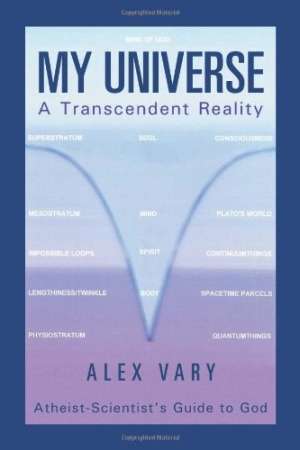My Universe
A Transcendent Reality
Paul Gauguin considered his painting Where Do We Come From? What Are We? Where Are We Going? to be his most important work. The painting depicts three questions he first pondered in Catholic catechism; Gauguin rejected religion in adult life but not those provocative questions.
Through the ages, philosophers, theologians, scientists, and innovators have searched for the meaning of life. Alex Vary, a scientist and avowed atheist, worked for over three decades at NASA’s Lewis Research Center before retiring to write My Universe: A Transcendent Reality. The essays reveal his thoughts about how the physical world might connect with other levels of consciousness, more often postulated in religion and philosophy than science. Explanations of the principles of quantum physics, string theory, black holes, and DNA are followed by discussions of the world’s primary religious traditions. Vary suggests that flashes of intuition prompting scientists and mathematicians to accept theoretical proofs are comparable to the “knowing” of spiritual truth sought by religious seekers and to the inspiration that comes unbidden to creative artists.
According to Vary, some scientists distrust religious mysticism while others consider it a valid exploratory option, as evidenced by Albert Einstein’s efforts to discover a “theory of everything.” The author also quotes from Stephen Hawking’s book, A Brief History of Time: “If we find the answer to that [theory of everything], it would be the ultimate triumph of human reason for then we would truly know the Mind of God.”
Expository dialogue between astral entities, photons, and other imaginary characters explain scientific and philosophic theory the author presents. These conversations offer mildly humorous relief from a text dense with ideas. Acknowledging the inadequacy of language to convey precise meaning, Vary writes, “I want to construct an edifice of words and thoughts that reveal the transcendental aspects of the universe.”
Vary’s explanation of DNA includes a statement from Bruce H. Lipton’s book, The Biology of Belief, which describes the new science of epigenetics. This field of study focuses on increasing evidence that mind and matter interact, and suggests that a cell is made up of more than its DNA composition and is influenced by life and energy around it.
This book reflects the author’s deep knowledge of science and demonstrates his skill in writing both prose and poetry. The format supports his belief that the apparent chaos found scientifically in the Universe can be transformed into comprehensive order. The text flows logically from one subject to the next, and each section ends with a synopsis of the material covered. The volume concludes with an ordered worldview. Vary’s liberal use of what he calls “jabberwock” language, which includes a clever assortment of alliterations, noun and verb modifiers, and word play, tends to detract from the message.
Both interesting and provocative, My Universe offers lay readers an opportunity to understand the intricacies of science and how matter and mind might be intertwined. As the author notes, some scientists, cosmologists, and theologians may disagree with his ideas, but others will find inspiration in this book.
Reviewed by
Margaret Cullison
Disclosure: This article is not an endorsement, but a review. The publisher of this book provided free copies of the book and paid a small fee to have their book reviewed by a professional reviewer. Foreword Reviews and Clarion Reviews make no guarantee that the publisher will receive a positive review. Foreword Magazine, Inc. is disclosing this in accordance with the Federal Trade Commission’s 16 CFR, Part 255.

